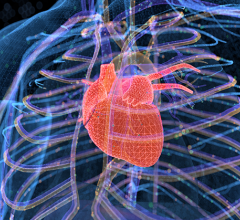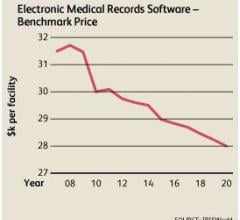
Dr. Maurice A. Ramirez is co-founder of Disaster Life Support of North America Inc., a national provider of Disaster Preparation, Planning, Response and Recovery education. Through his consulting firm High Alert LLC., he serves on expert panels for pandemic preparedness and healthcare surge planning with Congressional and Cabinet Members. Board certified in multiple medical specialties, Dr. Ramirez is Founding Chairperson of the American Board of Disaster Medicine and serves the nation as a Senior Physician-Federal Medical Officer in the National Disaster Medical System. Cited in 24 textbooks and the author of numerous published articles, he is co-creator of C5RITICAL and author of Mastery Against Adversity.
In the years since 9/11, disaster medicine has come into its own. Now a recognized specialty, the practice of disaster preparedness, disaster planning, disaster response and disaster recovery as it relates to the practice of medicine and the function of healthcare and healthcare institutions has moved from the realm of the emergency manager and hospital safety officer into the realm of the healthcare professional.
In this expanding universe of knowledge, the hospital floor and the Intensive Care Unit (ICU) were all but forgotten. Michael Osterholm and others have discussed the impact of mass casualty events and pandemic influenza on the ability of hospital ICUs and other high acuity departments to meet the needs of a disaster response. Models created by Schultz and Ramirez had demonstrated that with a small application of behavioral health, savvy surge capacities can be increased by as much as 400 percent. These vast expansions of surge capacity rely in part on the ability of inpatient services to accommodate additional admissions. It is clear that high acuity medical treatment areas must be the next recipient of the benefits of the lessons learned from the disaster field office. These lessons include:
• Identify clear and definable goals
• Identify the processes required to obtain those goals
• Establish clear and absolute criteria for the triage of the processes
• Triage the processes according to those criteria
In the ICU and other high acuity areas of the hospital the goal is the preservation of life. Fortunately, in these environments, patient triage has already taken place. Although these patients have been determined to be critical, further triage serves to determine which individual’s care will utilize so many resources as to endanger the care of two or more other individuals.
When the continued care of one patient will utilize sufficient resources to endanger the care or life for two or more others than the care of that one patient, then there is an absolute moral and ethical obligation of those providing the care to make a resource-based decision and that one patient must be reassigned to the expectant (black tag) treatment area. This is not a do not resuscitate (DNR) order. This is simply a statement of available resources.
Triage decisions are neither singular nor final, instead they are continuous and fluid events. Patients are constantly re-triaged based on available resources and current medical conditions. A critical patient, upon the limitation of needed resources, may temporarily be moved to an expectant category until resources or conditions are such that the patient may be re-triaged back to a critical category, or possibly has improved sufficiently to be “downgraded” to triage category yellow (urgent). On the other hand, if treatment of an ICU or a high acuity patient does not require sufficient resources to endanger the care of two or more other individuals, then that high acuity care should and, in fact, must continue as an ethical and moral imperative.
The identification of critical processes and the establishment of specific, measurable parameters lead to the objective allocation of additional resources needed to bolster critical processes needed to achieve the goal of healthcare and life. This approach also ensures that valuable limited resources are not squandered on processes that are not in danger of collapse as a result of surge. More importantly, as the number of patients under treatment expands process evaluation ensures that resources are wisely allocated to maximize the surge capacity.
Resources will always be limited in a disaster because our “just-in-time economy” has eliminated most stockpiles from healthcare institutions. Few hospitals have more than two or three day’s worth of medication, disposable supplies or food on hand at any given moment. They rely on regular re-supply from vendors, who themselves maintain only limited warehouse storage. In the event of a large scale disaster, needs quickly exceed resources (the very definition of a disaster) and supply chains break down. With resources even further limited, essential processes fail and a disaster becomes a catastrophe as the ability to respond is lost.
The frugal application of resources to essential processes in the provision of healthcare combined with a continuous re-triage of patients ensures that precious resources are utilized in a fashion which maximizes their impact and benefit. This lesson has already been implemented in virtually every hospital in the U.S., but it has not been implemented in a patient care area, and it has been implemented by the information technology department. Information technology professionals utilize the constant monitoring of key operational processes with clear and well-defined parameters to determine how best to dynamically shift available resources. Virtually every supplier of data management equipment and software, from imaging to electronic medical records to registration and accounting software, are utilizing this process to ensure continuity of their part of the operation. Your information technology professionals speak in terms of ‘bandwidth” rather than “bed space” and “memory allocation” rather than “ventilator availability.” However, with well over a quarter century experience in process analysis and resource allocation, your information technology professional is an invaluable resource in the method of evaluating your essential processes and resource allocation.
A careful evaluation of the healthcare process utilizing these information technology techniques will quickly show that in addition to those items already on our resource list, the most valuable and most limited resource are the healthcare professionals themselves. It has been said that it takes at least seven years to grow a doctor, at least two years to grow a nurse or a respiratory therapist and many more years to ensure the experience necessary to operate in these professions and every other patient care profession with any degree of expertise. The loss of a healthcare professional through injury, illness or stress has a significant negative impact upon both operational capacity during a disaster as well as the short and long-term recovery following the disaster. Lose just one of these professionals and you impact the care of thousands or even tens of thousands of patients into the future.
Ensuring the resilience of healthcare professionals within the high acuity arenas of the hospital is the single most effective and most efficient means of expanding surge capacity beyond the emergency department.
There are six areas of human functioning:
1. Physical 2. Emotional 3. Intellectual
4. Social 5. Behavioral 6. Spiritual
Each of these areas of human functioning have a corresponding form of resilience, a canteen that is filled in the time between disasters and drawn from during the response to a disaster. These six canteens of resilience are:
1. Physical 2. Emotional
3. Intellectual 4. Relationship (social)
5. Functional (behavioral) 6. Spiritual
It is through the maintenance and enhancement of resilience both for each individual healthcare professional as well as for the processes by which we provide high acuity healthcare in the ICU and other areas of the hospital that we maximize the surge capacity of these most critical areas, as well as ensuring that those that staff them do not become the collateral casualties of our disaster response.


 June 14, 2024
June 14, 2024 








